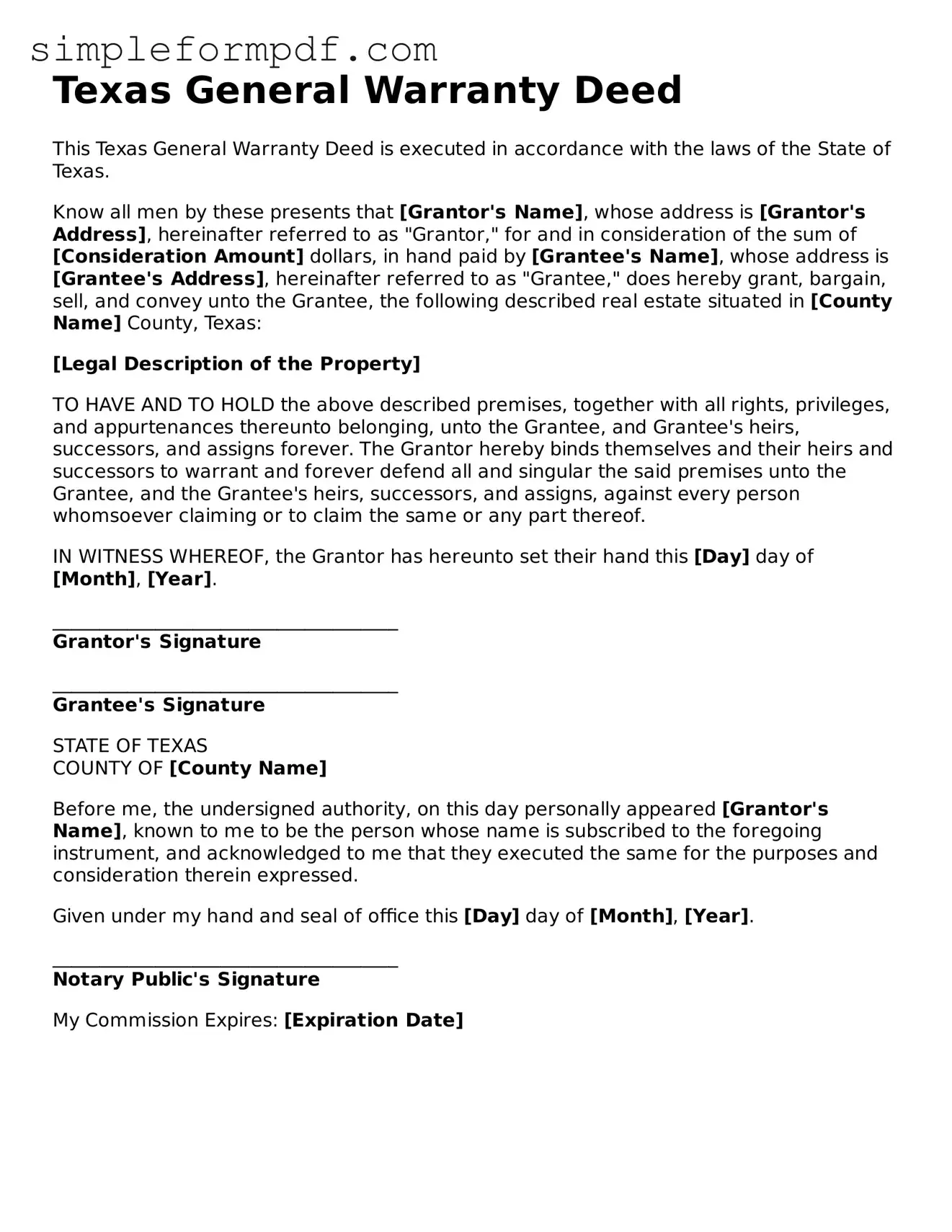Texas General Warranty Deed
This Texas General Warranty Deed is executed in accordance with the laws of the State of Texas.
Know all men by these presents that [Grantor's Name], whose address is [Grantor's Address], hereinafter referred to as "Grantor," for and in consideration of the sum of [Consideration Amount] dollars, in hand paid by [Grantee's Name], whose address is [Grantee's Address], hereinafter referred to as "Grantee," does hereby grant, bargain, sell, and convey unto the Grantee, the following described real estate situated in [County Name] County, Texas:
[Legal Description of the Property]
TO HAVE AND TO HOLD the above described premises, together with all rights, privileges, and appurtenances thereunto belonging, unto the Grantee, and Grantee's heirs, successors, and assigns forever. The Grantor hereby binds themselves and their heirs and successors to warrant and forever defend all and singular the said premises unto the Grantee, and the Grantee's heirs, successors, and assigns, against every person whomsoever claiming or to claim the same or any part thereof.
IN WITNESS WHEREOF, the Grantor has hereunto set their hand this [Day] day of [Month], [Year].
_____________________________________
Grantor's Signature
_____________________________________
Grantee's Signature
STATE OF TEXAS
COUNTY OF [County Name]
Before me, the undersigned authority, on this day personally appeared [Grantor's Name], known to me to be the person whose name is subscribed to the foregoing instrument, and acknowledged to me that they executed the same for the purposes and consideration therein expressed.
Given under my hand and seal of office this [Day] day of [Month], [Year].
_____________________________________
Notary Public's Signature
My Commission Expires: [Expiration Date]
